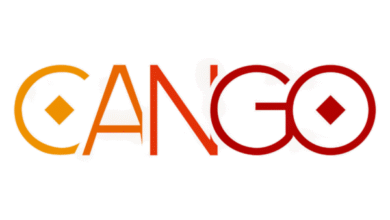Stripe Tempo Blockchain: A Payments-Focused Innovation

Stripe Tempo blockchain is quietly poised to redefine digital payments as it emerges from the fintech giant’s innovative development efforts. In collaboration with cryptocurrency venture capital firm Paradigm, Stripe is crafting a high-performance, payments-focused blockchain that will operate as a layer one solution compatible with Ethereum’s programming language. This strategic move aligns Stripe with the growing trend of established companies entering the blockchain space, echoing similar initiatives by industry titans such as Binance and Coinbase. Recent Stripe crypto news has hinted at a series of acquisitions and partnerships that indicate the company is serious about establishing its footprint in the blockchain landscape. With the potential to streamline payment processes and enhance digital transactions, the Stripe Tempo blockchain is certainly a development to watch in the coming months.
The new technological venture by Stripe represents a significant stride towards creating a specialized blockchain tailored for financial transactions. Dubbed Tempo, this innovative platform is being developed alongside Paradigm, enhancing its robustness through expert collaboration. As a dedicated layer one blockchain, Tempo will ensure efficient payment processing, leveraging compatibility with widely-used programming languages like Ethereum’s. This endeavor showcases how large financial services are innovating to adapt to the rapidly evolving crypto landscape, alongside movements from other key players in the field. As Stripe continues to make strategic advancements, the implications for payments and cryptocurrency integration become increasingly impactful.
Introduction to Stripe Tempo Blockchain Development
The fintech sector is witnessing a significant innovation as Stripe quietly embarks on its journey to develop the “Tempo” blockchain. This initiative is a strategic partnership with Paradigm, a well-known cryptocurrency venture capital firm. The emergence of this payments-focused blockchain is poised to change the landscape of digital payments, targeting the current gaps in existing blockchain infrastructures. Given that Stripe is a recognized leader in online payment solutions, the potential impact of their move into blockchain technology cannot be overstated.
Reports, including one from Forbes, highlight how this initiative is not just a fleeting venture but a well-thought-out plan involving elite expertise, particularly with Matt Huang from Paradigm on board. Such collaboration signifies Stripe’s commitment to integrating blockchain technology into their payment systems, which could allow for faster settlements and reduced transaction fees, thus enhancing user experience for both businesses and consumers.
Understanding Payments-Focused Blockchain Technologies
Stripe’s Tempo blockchain represents a growing trend in the financial technology sphere where companies are recognizing the need for specialized blockchain solutions that cater specifically to payment processing. Unlike generic blockchains, Stripe’s approach suggests a keen focus on building a system that emphasizes speed, security, and scalability for transactions. This targeted approach addresses the evolving demands of digital commerce, where instant payments and seamless user experiences are paramount.
Moreover, the designation of Tempo as a layer one (L1) blockchain implies that it is being created independently, which presents an opportunity for Stripe to tailor the technology to their specific requirements rather than adapting existing systems. This foundational strategy could enable innovative features aligned with Stripe’s payment processing ethos, thereby bridging the gap between traditional finance and the burgeoning world of cryptocurrency.
The Paradigm Partnership and Its Implications
The collaboration between Stripe and Paradigm is noteworthy, as it blends financial expertise with cutting-edge technological insight. Paradigm’s experience in the crypto space equips Stripe with strategic advantages in navigating the complexities of blockchain technology. By partnering with a venture firm that has invested in leading crypto platforms, Stripe can leverage Paradigm’s network, insights, and resources to expedite the development of TEMPO.
This partnership not only signals a commitment to innovation but also positions Stripe at the forefront of crypto developments. As other financial institutions follow suit, Stripe’s work could serve as a blueprint for the financial sector’s evolution into decentralized technology realms. Observers will be watching closely to see how this partnership shapes the future of blockchain and payments.
Stripe Layer One Blockchain: A Game-Changer?
As Stripe embarks on its quest to develop a layer one blockchain with Tempo, industry watchers are optimistic about the transformative potential of this initiative. Being built from scratch allows Stripe to innovate freely without the limitations imposed by legacy systems. This freedom could lead to groundbreaking features optimized for digital transactions and potentially set new industry standards for performance and reliability.
Furthermore, Tempo’s adaptability to Ethereum’s programming language opens up possibilities for seamless integration with existing decentralized applications. This capability not only widens the scope of potential partnerships and integrations but also enhances the utility of Tempo as a payments-focused platform. The implications of such advancements are profound, as they could position Stripe not just as a payment processor but as a full-fledged blockchain service provider.
A Look at Stripe Crypto News and Market Trends
The development of Stripe’s Tempo blockchain comes at a time when the cryptocurrency market is experiencing transformative growth. With key players like Binance and Coinbase launching their own blockchains, Stripe’s move signals a potential shift in how traditional fintech companies are adopting and integrating blockchain solutions. Recent Stripe crypto news highlights the growing importance of blockchain in providing innovative financial products.
As more companies in the fintech space recognize the value of blockchain, Stripe’s commitment to developing its own payments-focused system could help solidify its competitive edge. Tracking these developments will be crucial, as they may provide insights into how the market will respond to tailored blockchain solutions in the coming years.
The Acquisition Strategy behind Stripe’s Blockchain Initiative
Stripe’s recent acquisition efforts illustrate a robust strategy aimed at bolstering its blockchain capabilities. By acquiring specialized companies like crypto wallet infrastructure provider Privy and stablecoin firm Bridge, Stripe has not only enhanced its technological offerings but also fortified its position in the growing digital currency market. These acquisitions play a pivotal role in facilitating the developments associated with the Tempo blockchain.
The substantial investment in stablecoin technology further hints at Stripe’s ambitious plans to integrate digital currencies into its payment ecosystems. Through these acquisitions, Stripe is laying a comprehensive foundation for Tempo, ensuring that it is well-equipped to meet emerging challenges in the payments landscape and adopt evolving digital finance trends.
Tempo Blockchain and its Competitive Advantages
By developing a payments-focused blockchain like Tempo, Stripe aims to carve out a significant niche within the competitive landscape of blockchain technology. The focus on speed and efficiency aligns with the company’s existing infrastructure, setting the stage for a highly optimized payment processing solution that can handle considerable transaction volumes while minimizing costs.
Additionally, the specifics of Tempo being an L1 blockchain offer Stripe unique advantages over competitors that are bound by earlier frameworks. This capability not only allows for greater customization but also positions Tempo as an innovative response to the specific needs highlighted by market demand for fast and reliable payment solutions.
Future Perspectives on Stripe’s Blockchain Initiative
Looking ahead, the implications of Stripe’s entry into the blockchain domain with Tempo could redefine the entire payments industry. As digital, decentralized financial solutions become more mainstream, Stripe’s active participation in building a specialized blockchain could encourage other financial institutions to pursue similar paths. Furthermore, it represents a counterpoint to traditional banking methods and a challenge to legacy systems that may be unable to adapt to the rapid innovations presented by blockchain technology.
As feedback from potential users and broader market trends materialize, Stripe will likely make iterative adjustments to Tempo, ensuring it meets the needs of a rapidly evolving market. This adaptability will be critical in ensuring Tempo’s success and longevity as a payments-focused blockchain solution.
Closing Thoughts on the Future of Payments and Blockchain
In conclusion, Stripe’s strategic foray into developing the Tempo blockchain reflects significant shifts within the intersection of fintech and blockchain technology. As awareness and acceptance of digital currencies grow, Stripe’s commitment to integrating blockchain into their payment systems positions them as a pivotal player in redefining modern financial transactions.
This venture not only aligns with global trends toward decentralized finance but also signifies an era where traditional institutions embrace and innovate upon new technologies. As the future unfolds, Stripe’s efforts may set the benchmark for how payments-focused blockchain solutions can effectively serve a growing market, advancing both efficiency and user convenience.
Frequently Asked Questions
What is the Stripe Tempo blockchain?
The Stripe Tempo blockchain is a payments-focused blockchain being developed by Stripe in partnership with Paradigm. This high-performance layer one (L1) blockchain aims to enhance payment processing capabilities while ensuring compatibility with Ethereum’s programming language.
How does Stripe blockchain development differ from other blockchains?
Stripe blockchain development, specifically with the Tempo project, focuses primarily on payments, aiming to provide a high-performance solution distinct from other blockchains. Unlike many existing platforms, Tempo is being built from scratch, creating a unique layer one (L1) blockchain focused on efficient payment transactions.
What is the role of Paradigm in the Stripe Tempo blockchain project?
Paradigm is a cryptocurrency venture capital firm that has partnered with Stripe to develop the Tempo blockchain. Their collaboration involves leveraging Paradigm’s expertise in crypto investment to create a robust payments-focused blockchain that caters to the evolving financial landscape.
What makes the Stripe Tempo blockchain compatible with Ethereum?
The Stripe Tempo blockchain is designed to be compatible with Ethereum’s programming language, allowing developers to utilize familiar tools and frameworks. This compatibility can facilitate the integration of various services and enhance functionality in the payments-focused blockchain environment.
Why is Stripe’s Tempo blockchain considered significant in the crypto market?
Stripe’s Tempo blockchain is significant in the crypto market due to its focus on payment processing and its development from scratch as a layer one (L1) blockchain. With major players like Stripe entering the space, it could drive innovation and competition in blockchain solutions tailored for financial transactions.
What recent acquisitions has Stripe made that relate to its blockchain efforts?
Recently, Stripe has made strategic acquisitions to bolster its blockchain efforts, including the purchase of crypto wallet infrastructure provider Privy and the stablecoin infrastructure firm Bridge. These acquisitions align with Stripe’s vision of enhancing its crypto services and laying the groundwork for the Tempo blockchain.
What are the potential use cases for the Stripe Tempo blockchain?
Potential use cases for the Stripe Tempo blockchain include facilitating quicker and more secure payment transactions, creating a stablecoin ecosystem, and integrating with existing financial systems to streamline cryptocurrency payments for businesses and consumers.
How does the Stripe Tempo blockchain fit into the broader fintech landscape?
The Stripe Tempo blockchain fits into the broader fintech landscape by representing a trend where established financial tech players, like Stripe, are creating tailored blockchains to enhance payment processing capabilities. This positioning places Stripe alongside other crypto firms expanding their blockchain reach, like Binance and Coinbase.
| Key Point | Details |
|---|---|
| Stripe’s Development | Stripe is developing a payments-focused blockchain called ‘Tempo’ in partnership with Paradigm. |
| Blockchain Details | Tempo is a layer one blockchain built from scratch and compatible with Ethereum’s programming language. |
| Team Size | A small team of five is currently working on the Tempo project. |
| Market Trends | The launch of Tempo is part of a trend where major fintech players are developing their own blockchains. |
| Recent Acquisitions | Stripe has recently acquired several companies, including Privy and Bridge, to strengthen its blockchain capabilities. |
| Speculation on Timeline | While no exact launch date is announced for Tempo, industry speculation suggests ongoing developments. |
Summary
The Stripe Tempo blockchain represents a significant advancement in the fintech sector, as it aims to establish an efficient and high-performance system for payments. With activities and acquisitions that indicate a strategic approach, Stripe is positioning itself to become a key player in the blockchain ecosystem. As more fintech companies invest in technology related to blockchain development, like Tempo, the competition will intensify, ultimately benefiting consumers and businesses alike.




